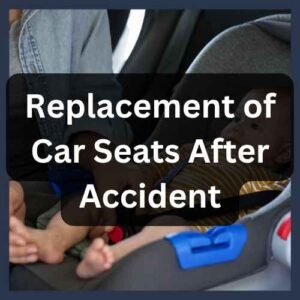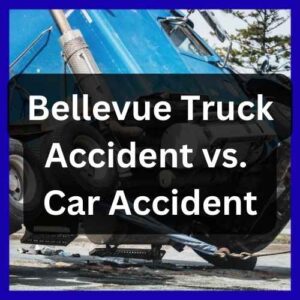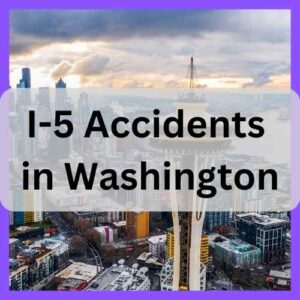Accidents in merging lanes are a leading cause of congestion, injuries, and disputes on highways and arterial roads in Bellevue and throughout King County. Navigating a merge—whether onto I-405, SR-520, or downtown streets—requires split-second decisions, strict attention, and respect for right-of-way. Yet, despite best efforts, thousands of collisions happen every year in these critical transition points.
If you or a loved one has been injured in a merging lane accident, you likely have urgent questions: How is fault determined? What evidence could prove you weren’t at fault? How do insurance adjusters assign blame in merging crashes? At R Martin Law Group, we advocate for injured victims and their families, helping you understand your rights and obtain the compensation you deserve.
Why Are Accidents in Merging Lanes So Common on Highways?
Merging points are designed to help vehicles move from on-ramps or lateral lanes into flowing traffic. However, merging lanes quickly become trouble zones due to:
- Driver error: Failing to check blind spots, use turn signals, or match speed with traffic greatly increases crash risks.
- Traffic density: The greater the number of cars, the less margin for error—and the higher the likelihood of aggressive or distracted maneuvering. According to the Washington State Department of Transportation (WSDOT), freeway corridors in King County see over 2,500 crashes annually caused by merging or lane-changing conflicts.
- Roadway design or signage: Short or unclear merge zones, faded road markings, and construction zones exacerbate confusion and mistakes.
- Impatience and stress: During peak hours, drivers often rush or misjudge gaps, putting themselves and others at risk of sideswipes, rear-end collisions, and forced evasive moves.
These factors highlight why merging lane accidents are so common on highways around Bellevue, especially on busy routes like I-90, I-405, and the SR-520 corridor.
Common Causes: The Dynamics Behind Merging Lane Collisions
- Poor situational awareness: Neglecting blind spots or mirrors.
- Failure to signal: Not using turn signals to communicate intent.
- Speed mismatches: Entering too slowly or too quickly, disrupting traffic flow.
- Distracted or aggressive driving: Using a phone, tailgating, or weaving across lanes.
- Improper yielding: Not respecting the right-of-way of vehicles already in the lane.
National Highway Traffic Safety Administration (NHTSA) studies reveal that up to 10% of all highway collisions stem from improper merging or lane changes (NHTSA).
Fault and Liability in Accidents in Merging Lanes
How Do Insurance Adjusters Assign Blame in Merging Crashes?
Assigning liability in accidents in merging lanes centers on the rule that the merging driver usually must yield to established lane traffic. However, real-world scenarios can complicate matters. Insurance companies and courts examine:
- Right-of-way: Did the merging driver fail to yield?
- Signals: Was a turn signal properly used?
- Speed: Did both drivers adjust speed appropriately?
- Behavior: Was either driver distracted, aggressive, or violating traffic laws?
If both drivers merge into the same space from opposite sides, comparative negligence may apply. For example, if one failed to signal and another was speeding, both may share fault.
The Washington State comparative fault system (RCW 4.22) means each driver’s compensation is reduced by their percentage of blame—a critical point for accident victims seeking damages.
Types of Collisions and Injuries
- Sideswipes: Common when two vehicles merge simultaneously.
- Rear-end crashes: Occur if following vehicles cannot safely slow down for a merging car.
- Evasive maneuvers: Lead to loss of control or secondary accidents.
Injuries may range from whiplash, bruises, and sprains to severe outcomes like fractures, spinal trauma, or traumatic brain injury.
Contact us today for a free consultation to see how we can help Kirkland residents
What Evidence Helps Determine Fault in a Merging Lane Accident?
Establishing fault in merging collisions requires clear, compelling evidence. Insurance adjusters and courts rely on several types of proof to reconstruct the crash and decide liability:
- Police reports: Contain diagrams, initial impressions of fault, and any citations issued. Officers’ findings weigh heavily in liability discussions.
- Dashcam and surveillance footage: Provides an objective record of the moments leading up to the crash—proving or disproving use of signals, speed, and driver actions.
- Witness statements: Third-party observations lend credibility to the account of events, filling in gaps or correcting biases.
- Photos of damage and scene: Help reconstruct the exact contact points and vehicle positioning before/after impact.
- Expert accident reconstruction: In complex cases, experts use skid marks, debris distribution, speed analysis, and trajectory mapping to distinguish negligence.
| Evidence Type | Purpose | Immediate Action |
|---|---|---|
| Police report | Official documentation of crash, violations, fault indicators | Call 911, request an officer at the scene |
| Photos/video | Visual record of signals, vehicle positions, damages | Take pictures/videos from all angles |
| Witness info | Third-party perspective; corroborates or contradicts driver accounts | Get names, contact info at the scene |
| Vehicle damage analysis | Shows point of impact & movement | Preserve vehicles before repairs, photograph thoroughly |
| Medical documentation | Links injuries to crash for insurance/claims | Seek prompt treatment, follow up with care providers |
What to Do If You’re Not at Fault in a Merging Lane Collision
If you believe you merged correctly and another driver caused the crash, take these steps immediately:
- Stay at the scene and ensure safety.
- Call 911 for police and medical responders if injuries are present.
- Document the scene: Take comprehensive photos from multiple angles.
- Collect witness information and statements.
- Exchange insurance and contact info with all parties.
- Do not admit fault or speculate—let the facts be gathered first.
- Request a written copy of the police report as soon as available.
- Contact an experienced personal injury attorney to protect your rights.
Practical Guidance & Local Examples: Bellevue Merging Accident Scenarios
Case 1: Ramp Merge on I-405
On a rainy evening, Driver A attempted to merge from the SE 8th Street on-ramp onto I-405. Driver B sped up to block the merge, leading to a sideswipe at highway speed. The police report confirmed Driver A was using a signal and merged at appropriate speed, while Driver B was cited for aggressive driving.
- Outcome: Fault assigned primarily to Driver B; Driver A’s injuries treated as grounds for compensation under state comparative negligence law.
Case 2: Downtown Bellevue Lane Change
Driver C attempted to merge left near Bellevue Way NE but failed to use a turn signal and did not check his blind spot. The resulting collision forced another vehicle into the curb. Dashcam footage and witness testimony demonstrated C’s careless merge; insurance assigned him full liability, with claimants recovering damages for repairs and medical bills.
Local Trend:
According to recent reports from Washington State Patrol, approximately 17% of Bellevue-area multi-vehicle accidents involve improper merging or unsafe lane changes, underscoring the urgency of safer practices and legal recourse for victims.
Insurance Company Role: Understanding Their Process & Tactics
After a merging lane accident, insurance companies leave no stone unturned to limit their financial exposure. Their adjusters:
- Analyze every available shred of evidence—police reports, skid marks, video footage, and even social media posts.
- Interview witnesses and use specialized software to reconstruct the accident timeline.
- Apply Washington State comparative fault rules to minimize payouts—even if your share of fault was minor.
- Pressure unrepresented victims to settle quickly and for less than their true losses—including property damage, medical expenses, missed work, and emotional harm.
This underscores why hiring a knowledgeable Bellevue personal injury lawyer is essential. An attorney can gather compelling evidence, negotiate assertively, and ensure insurers do not devalue your claim.
How Do Insurance Adjusters Assign Blame in Merging Crashes?
- They default to the presumption that the merging driver is responsible—unless evidence points to reckless or negligent actions by the established lane driver.
- Comparative negligence is rigorously applied in Bellevue and King County courts. Your compensation may be reduced proportionally to your degree of fault—even if you were only 10% responsible.
Risks, Challenges, and Legal Options After a Merging Lane Accident
Merging lane accident claims present special challenges in Washington:
- Police reports may be vague or inconclusive if witnesses disagree.
- Physical evidence can degrade or disappear quickly.
- Insurers and the other driver may dispute events, blaming you to reduce financial responsibility.
- Short statutes of limitation apply—generally, you have three years to file an injury claim in Washington (RCW 4.16.080).
With large medical expenses, lost wages, and vehicle repairs at stake, negotiating alone is risky. Legal representation maximizes your chance of full and fair recovery.
Compensation Categories in a Merging Lane Accident:
| Category | Examples |
|---|---|
| Medical Expenses | Ambulance, ER visits, follow-ups, rehab, medication |
| Lost Income | Missed work, loss of earning capacity |
| Pain and Suffering | Physical pain, emotional anguish |
| Property Damage | Car repairs or replacement |
| Out-of-Pocket Expenses | Rental car, towing fees, child care while recovering |
How to Safely Merge Onto a Freeway During Heavy Traffic
- Accelerate to match the speed of existing traffic before entering the merge area.
- Signal 100-200 feet before your intended lane change.
- Consistently check mirrors and blind spots.
- Yield to vehicles already established in the traffic lane; never force your way in.
- Leave a safe following distance and avoid sudden maneuvers.
- If you miss a gap, slow or stop safely in the merge lane, then attempt merging again—never stop abruptly on the main highway.
- Watch for motorcycles, bicycles, and larger vehicles, which may have limited maneuverability.
Checklist: Immediate Steps After a Merging Lane Collision
- Ensure safety first: If possible, move vehicles out of traffic. Turn on hazard lights.
- Call 911: Report injuries and request law enforcement.
- Gather evidence: Photos, video, witness statements, insurance info.
- Do not admit fault: Allow an official investigation to determine liability.
- Obtain medical attention: Injuries can worsen over time—document all care.
- Notify your insurer: Report the crash but avoid recorded statements until you’ve spoken with an attorney.
- Consult a qualified Bellevue injury lawyer: Protect your rights, avoid costly mistakes with claims or negotiations.
FAQ: Accidents in Merging Lanes in Bellevue, WA
1. Why are merging lane accidents so common on highways?
High-speed traffic, limited visibility, distracted driving, unclear signage, and impatient motorists create a perfect storm in merging zones—especially on busy Bellevue highways. These areas require heightened attentiveness and courtesy from all drivers. Defensive driving and proper yield practices are key to prevention.
2. What evidence helps determine fault in a merging lane accident?
Police reports, dashcam or streetcam footage, accident scene photos, witness statements, vehicle damage analysis, and expert reconstruction are all crucial. A compelling combination of these can establish liability and protect your claim.
3. How do insurance adjusters assign blame in merging crashes?
They examine who had the right-of-way, whether signals were used, traffic speed, driver attentiveness, and all involved parties’ actions. Insurers use state-specific negligence laws to allocate fault percentages—potentially reducing available compensation to victims.
4. What to do if you’re not at fault in a merging lane collision?
Stay calm, document everything, call 911, collect evidence and witness contact information, promptly seek medical care, and consult a Bellevue car accident attorney. Do not discuss fault with other drivers or insurance until you have proper legal advice.
5. How to safely merge onto a freeway during heavy traffic?
Signal well in advance, match the speed of traffic, check all mirrors and blind spots, and yield to vehicles already in the lane. Never force your way into a gap, and always maintain a safe distance. Stay alert for motorcycles and large vehicles as well.
6. Why should I choose R Martin Law Group after a merging lane accident?
Our firm’s local experience in Bellevue and King County, deep knowledge of Washington traffic law, and compassionate advocacy enable us to maximize results for merging accident victims—whether in settlement negotiations or at trial.
Key Takeaways on Accidents in Merging Lanes
Accidents in merging lanes are a persistent threat to Bellevue drivers, causing injuries, vehicle damage, and legal confusion. Fault is often presumed against the merging party, but evidence (videos, witness statements, expert analysis) can shift liability. Insurance companies work aggressively to limit your recovery, making attorney guidance essential after any serious crash.
- Always document the scene and your injuries in detail.
- Leverage experienced legal counsel to level the playing field with insurers.
- Act promptly—get medical and legal advice early to protect your claim and ensure your rights are preserved.
If you or a loved one has suffered injuries in a merging lane accident in Bellevue or King County, R Martin Law Group is here to help you understand your options and achieve the best possible outcome. Your peace of mind and fair compensation are our top priorities.
Contact R Martin Law Group now for a free, no-obligation case review.
“`








